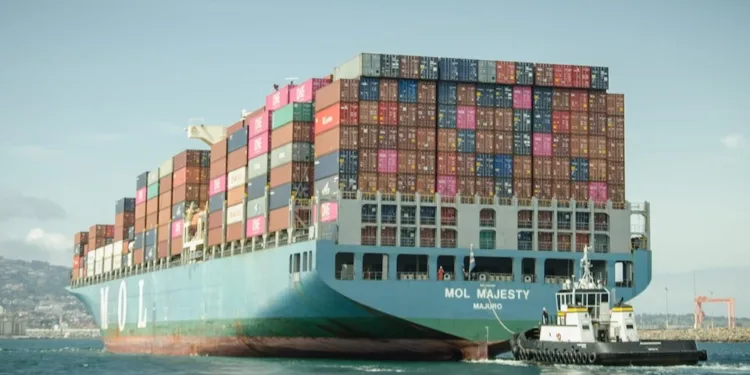Containerized imports through American ports are set to take an historic plunge in September, an analyst predicts, as President Donald Trump’s China tariffs take a toll on the busiest trans-Pacific trade route.
Join the leaders shaping freight’s future at
F3: Future of Freight Festival, Oct 21-22.
Network with the industry’s best and discover what’s next.
Inbound volumes through the top 10 U.S. ports in August finished 0.1% ahead of the same month in 2024, said analyst John McCown in a monthly report, after July volume that was 3.2% ahead, fueled by importers bringing in shipments earlier than usual to beat an August 7 deadline for a renewal of reciprocal tariffs.
Trump in August announced yet another 90-day pause in the chaotic China trade war, which will now run into November. But frontloading by anxious shippers during the previous tariff break soaked up most eastbound volumes moving in the peak season, while economic uncertainty and tariff-stoked inflation has undercut demand as shown by weaker container rates on the eastbound trans-Pacific.
More concerning, said McCown, is that all indicators bode ill for U.S. container traffic in September and through the remainder of the year.
“When U.S. container volume data is compared to global data,” McCown said, “there is a noticeable and widening gap as the downtrends in U.S. lanes are being significantly mitigated by increased volume in other areas.”
Container exports from the Far East were ahead 6.3% y/y as July set a new record, according to Container Trade Statistics, which collects data directly from ocean carriers.
In contrast, McCown said that without the spike from frontloading, the U.S. would have seen a drop in y/y volume in July “at least as high as the Far East’s positive number.”
“The U.S. is a less relevant player in world trade today than it was prior to these various tariff initiatives and will become moreso as announced plans are implemented,” McCown said.
U.S. import volumes grew 15.2% in 2024, a reliable engine that has usually outpaced growth in gross domestic product (GDP), but McCown now expects that the U.S. will show a year-over-year decline in inbound container volume.
He quoted a revised forecast by the National Retail Federation that shows import volumes falling 3.4% for the year.
“That translates into the remaining four months of 2025 being down 15.7% compared to the same four months in 2024,” said McCown.
The Port of Los Angeles expects inbound volumes to fall 10% in September y/y; McCown agrees that the busiest U.S. container port will see a double-digit decline for the month.
China remains by far the largest inbound container trade lane for the U.S., accounting for 29.3% of the total in May, but down from a historic peak of 40%.
Moreover, bookings for containers moving from China to the U.S. the first week of September were down 26% from the same week a year ago. Backhaul moves westbound to China were off by 18% despite the latest tariff pause.
“If and when those tariffs are implemented, it is highly likely they would lead to broader declines” in the China-U.S. trade, McCown said, and retaliatory tariffs by China would impact volumes in both directions.
A year-on-year decline in inbound volume is a rarity in the more than six decades of container shipping, McCown noted, matched only by drops during the 2009 financial crisis and the pandemic, which were short-lived. Imports have reliably grown at a rate two, three or more times that of of the GDP. “The downward turn will be due solely to tariffs and unfortunately, there is nothing at present that suggests it will be short-lived,” McCown said.
Find more articles by Stuart Chirls here.
Related coverage:
Maersk: No China ship surcharge; Seaspan to reflag 100 vessels
Panel: Jones Act a dire economic ‘burden’ for Hawaii
LA port sees 10% import drop through year-end
Dwell down for LA-Long Beach container trucks, rail
The post Tariffs torching U.S. container imports: Analyst appeared first on FreightWaves.






















